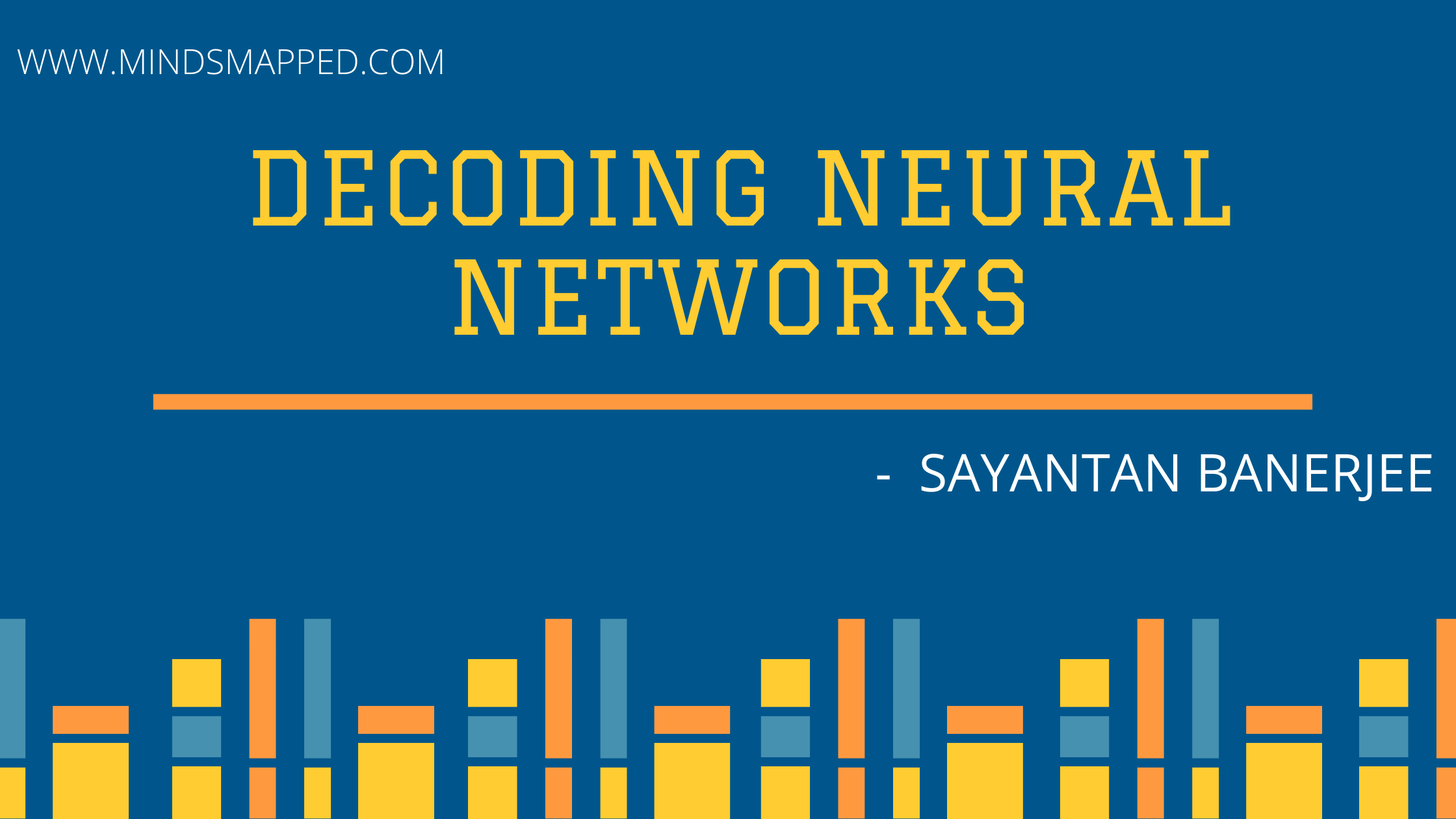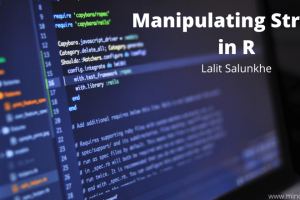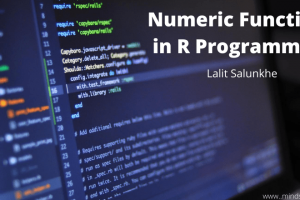
Decoding Neural Networks
ANN or Artificial Neural Networks is the advanced form of artificial intelligence(AI) in machine learning(ML). Traditional machine learning concepts, consisting of different algorithms such as Linear regression, Random Forest, etc., are not suited for production ready environment, as they are not accurate enough, say in image classification tasks. My post is all about an outline or rather a detailed review of artificial neural networks. My motive is to give an explanation of what neural networks is or how does it work and how we can use them in our machine learning challenges and different business decisions.
What is Neural Network?
Neural Networks are designed in conformity with the human brain. It is rather built to imitate the brain’s functionality. As we know human brain is made up of several neurons and neuro-dendrons that sends signals (output) to the body according to the stimulus(input), likewise, an Artificial Neural Networks (ANN) is also made up of several preceptrons (explained later) which gives out the desired output after processing the input.
An Artificial Neural Networks (ANN) comprises of three vital stages:
• Input layer – This layer is known for accepting all the inputs (For example, Pixels in case of images).
• Hidden layer – These are the set of layers that lay between the input and output layers, which execute the computations that result in the output.
• Output layer – Alike it’s name, this layer outputs the results which is produced after the transformation of the imputed data in the hidden layers.
Deep Learning
An advanced field of machine learning, i.e., deep learning(DL) , uses the concepts of Neural Networks, in order to solve the highly-computational use cases which involves the analysis of multi-dimensional data. It involves in the automation of the process of extraction of feature, to ensure that minimal human intervention is required.
Difference between ML, DL and AI
Often people tend to consider that Artificial Intelligence, Machine Learning and Deep Learning are exactly same, since they have common applications. That reminds us of Siri, which is comprises all the three mentioned i.e Artificial Intelligence, Machine Learning and Deep Learning.
ARTIFICIAL INTELLIGENCE – It is basically the science of making machines imitate human behavior.
MACHINE LEARNING – It is the sub category of Artificial Intelligence that puts it’s attention on feeding data and making decisions through the machines.
DEEP LEARNING – It is the sub category of Machine Learning that solves problems using the concept of Neural Networks.
Evaluating it, Artificial Intelligence, Machine Learning and Deep Learning are fields that are interconnected. Artificial intelligence is aided by Machine Learning and Deep Learning, to solve data driven problems, by providing a set of algorithms.
How does Neural Network works?
To clearly understand how neural networks work, we need to decode it and understand the most basic unit of a Neural Network, which is a perceptron.
A perceptron is used to classify linear data. It is a single layer neural network. It comprises of four components:
• Inputs
• Bias and Weights
• Summation function
• Activation function
So we can think about, where we have to build an Artificial Neural Network or ANN that classifies images into two sections:
Section A: A green leaf
Section B: A starch stained leaf
So we create a neural network to classify the leaves in these two sections.
The method begins with transforming and processing the input. Here, each leaf image would be broken into pixels depending on the images’ dimension.
Suppose, the image constitutes of 40 by 40 pixels, then the total no. of pixels will be 1600. However, these pixels are then represented as matrices, which are then provided into the input layer (as discussed earlier) of the Neural Network.
Just like our brains, which consists of neuron and neuro-dendrons that help us in connecting and building or constructing the entire thought process. Similarly Artificial Neural Network or ANN has perceptrons that intakes input or data and pass them after processing them, into the hidden layer. Where the input get processed and finally passed on to the output layer. Thus determining the output.
As the process of passing the input from input layer to hidden layer, each input is assigned an initial random weight. The input’s corresponding weights are then multiplied with their respective inputs and their sum total is sent as input to the next hidden layer.
Then, bias, or rather a numerical value is alloted to each preceptron that is associated with each input’s weightage. Then, each perceptron is determined after passy through the transformation or activation function, whether that preceptron gets activated or not.
This activated preceptron is then used to transfer data to the next layer. This is how the data gets propagated through the neural network until the preceptron reaches the final or output layer.
At the final or output layer, a probable data is derived that actually decides whether the data, belonged to Section A or Section B.
Application of Neural Networks in real world
With Machine Learning, which provides machines with the ability to “think”, “learn”, and “adapt”, Neural Networks find extensive applications in areas where traditional computers cannot even compete. it’s vitally important to understand the applications of Neural Networks across various realms – from Social Media to Online Shopping, from Personal Finance to internet surfing, and finally, to the smart assistant on our phone.
We should keep in mind that this list is in no way exhaustive, as the applications of neural networks are widespread. Basically, anything that is deployed, one or the other type of neural network makes the machine learn, mimic and adapt.
Social Media
Flooded with the ever-increasing data gives the creators of these social media platforms the unique opportunity to immerse into them, with the unlimited data they have. Nevertheless to say we get to see new features every fortnight. Honestly, to be precise all of this would have been like a distant dream without Neural Networks.
In the world of social media, Neural Networks and their learning algorithms find large-scale applications. Let’s see how:
No sooner we upload any photo to Facebook, the faces gets automatically highlighted and prompts friends to tag. So, how does it promptly identify which of your friends are in the photo? Its as simple as that – Artificial Intelligence. In a video that was highlighting Facebook’s Artificial Intelligence research, they discussed about the applications of Neural Networks to vigor their facial recognition software. Facebook has been investing heavily in this area, which is not only within the bounds of the organization, but also through the accessions of facial-recognition startups like Face.com, Masquerade, and Faciometrics. However, in June 2016, Facebook announced a new initiative of Artificial Intelligence that uses diverse deep neural networks such as Deep Text, which is an artificial intelligence engine that can recognize the textual content of thousands of posts per second, with near-human accuracy.
Acquired by Facebook back in 2012, Instagram, utilizes deep learning by availing a connection of recurrent neural networks to distinguish the contextual meaning of an emoji – that has been steadily replacing the slangs (for example, a laughing emoji with tears could replace “lmao”). Identifying on the basis of algorithms, the emotion or the expressed feelings behind emojis, Instagram creates and automatically suggests emoji and hashtags related to the particular emojis. It might appear a minor application of Artificial Intelligence, but being able to analyze and interpret this emoji-to-text translation at a vast scale sets the basal bedrock for further analysis on how people use Instagram.
Pinterest basically uses computer vision which is another application of neural networks, where we educate computers to “visualize” like humans, in order to automatically recognize objects in images (or “pins”, as they denote it) and then suggest visually similar pins. Pinterest also have other applications of neural networks that include search and discovery, spam prevention, email marketing, ad performance and monetization.
Online Shopping
It’s quite common when we find ourselves in situations where we are all planned set to buy something, but somehow we end up buying a lot more than we have actually planned, and we are thankful to some super-awesome recommendations. Aren’t we?
Yeah, we can definitely blame neural networks for spoiling us with those recommendations that lures us always. By applying neural network and its algorithms, the e-commerce bodies are creating outstanding Artificial Intelligence systems that know us better than ourselves. Let’s check it.
Product Search
Our Amazon searches (“mobiles”, “earphones”, “laptops”, ” crockery”, “dress”, “accessories” etc.) return a list of the most pertinent products linked to our search, without wasting much of our time. Amazon stated that in one of its description of a product search technology, its algorithms automatically learn to combine multiple relevant features. It uses the past relevant searches and adapts to what is important for the customer in question. And finally what makes the algorithms “learn”? Yeah you guessed it right – it’s Neural Networks!
Product Recommendations
Amazon always shows us recommendations using its “customers who viewed this item also viewed”, “customers who bought this item also bought”, and also through organized recommendations on our homepage, on the top or bottom of the item pages, and finally through emails. Amazon uses Artificial Neural Networks to instruct its algorithms to learn and adapt the behavior and pattern of its users. However, this finally turns out to help Amazon, in providing even better and customized recommendations
Banking/Personal Finance
Cheque Deposits Through Mobile
Most of the large banks have recently being eliminating the need for their customers to physically come up to the banks or stores to deliver a cheque to the bank by offering the ability to deposit cheques through their own smartphone application. Technologies that empower these kind of applications use Neural Networks to decode and convert handwriting in the submitted checks into text. Fundamentally, Neural Networks finds itself at the core of any application that requires identification of image, speech or handwriting from the input data.
Fraud Prevention
Here the question arise how can a financial institution ascertain a fraudulent transaction? Mostly the daily amount of transactions are way too much to be reviewed manually. Thus to help with this issue, Artificial Intelligence is applied to create systems or applications that learn through training which types of transactions are fraudulent.
FICO – It is the company that makes credit ratings which are later used to determine its creditworthiness. This company involves in usage of the neural networks to vigor their Artificial Intelligence to predict fraudulent transactions. Factors involved, which might affect the artificial neural network’s final output include the size and frequency of the transaction and also the kind of retailer involved.
Mobile Applications
Voice to text
One of the most popular and striking features on our smartphones today is the voice-to-text conversion. Merely just clicking a button or saying a particular word, phrase or even a sentence (“Ok Google”, for just an example), lets us start speaking to our phone and our phone instantly starts converting the audio into text. Google, here makes use of artificial neural networks in a repetitive manner connection to empower voice search. Microsoft, which also claims to have developed a speech-recognition system, makes use of Neural Networks, that can transcribe conversations slightly more precisely than humans even.
Smart Personal Assistant
With the technology of voice-to-text becoming specific enough to rely on for the basic conversations, it is turning the technology into the control interface for a new generation of personal assistants. Earlier, there were basic phone assistants – Google and Siri (which are now succeeded by the more sophisticated and enlightened Google Assistant), which could set alarms and reminders, perform internet searches, and even harmonize with your calendar. Amazon, henceforth elaborated upon this model with the announcement of supportive software and hardware and components – Echo (later, Dot) and Alexa.
Final Thoughts
We have just analyzed superficially or rather scratched the surface, when it comes to the vast applications of neural networks in our day-to-day life. Specific domains and industries have integrated specific interactivity with Artificial Intelligence by making use of Artificial Neural Networks or ANN which seems far beyond of what has been talked about in this article
It is as simple as that! Well, as explained earlier, the concept of Neural Networks is nothing but purely based on the functionalities of human brain, thus mimicking it’s activity and executing it in ANN. We just require in-depth knowledge of algorithms and various mathematical concepts to implement it precisely.



